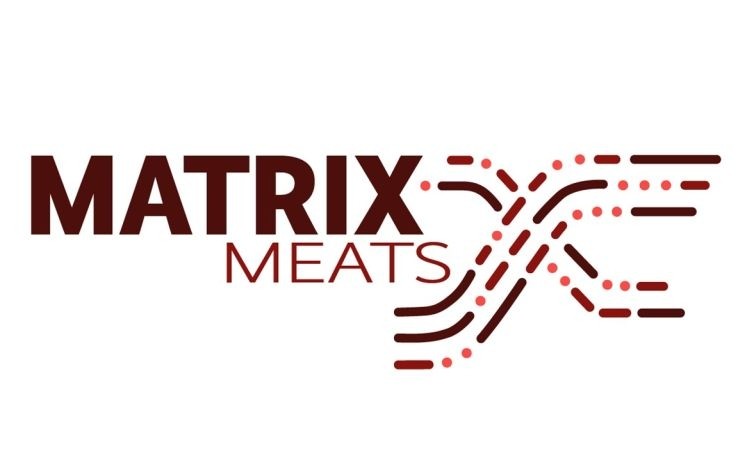Cell-cultured meat gamechanger? Matrix Meats to showcase nanofiber scaffolding in 'solid meat product' this year

If you don’t want cell-cultured (a.k.a. ‘cultivated’) meat to have the consistency of Jello, claim the founders of Matrix Meats – formed last year via a joint venture between Nanofiber Solutions and Ikove Capital both of Columbus, Ohio - you need to have some kind of structural replacement for the non-muscle, non-fat (‘extracellular’) matrix in meat.
Right now, for example, many startups are growing muscle and fat cells in separate bioreactors with a view to combining them at the end to form burgers or nuggets.
But even for such ‘processed’ products, they still need to add other ingredients such as plant proteins, or introduce additional processing steps if they want a product that doesn’t have the texture of “mush,” said Matrix Meats CTO Jed Johnson, PhD., who spent 10 years at Nanofiber Solutions developing electro-spinning technology to create nanofibers that can be used in everything from regenerative medicine/tissue engineering to air filters.
And if you want to create a whole-cut product such as a steak, having technology that delivers the right texture is mission critical.
‘A several millimeter thick piece of cultured meat’
The beauty of Matrix Meats – which develops edible scaffolding around which cells can seed, creating meaty 3D structures – is that it enables firms to grow and proliferate cells (the first stage of any cell-cultured meat process) and then differentiate them into various cell types such as muscle and fat (the second stage of the process), much more rapidly… all in a single bioreactor.
“We’re a one-stop solution,” said Johnson, who said Matrix Meats will unveil "a several millimeter thick piece of cultured meat by the end of this year in partnership with a cultured meat company."
“So instead of culturing, say, muscle and fat cells separately," Johnson told FoodNavigator-USA, "We can have different materials in our scaffold that support cell differentiation into multiple different types [so stiffer parts of the scaffold, for example, direct stem cells to differentiate into muscle, and softer fibers direct cells to differentiate into fat].”
“Cells can sense the stiffness of the structures that they are growing on and that’s one way to help them grow faster or differentiate into other cell types, for example.”
But does this approach of co-culturing cells in a single bioreactor only work with induced pluripotent stem cells (which behave like embryonic stem cells and can differentiate into any cell type) or does it also work with adult stem cells?
According to Johnson: “It also applies to the adult differentiated cells. We can use different materials with different moduli or different surface chemistry to promote attachment and growth.”
Visualizing the process
To help people visualize what cell-cultured meat production using Matrix Meats' scaffolding might look like, he said, think about a tank filled with cells in a liquid growth media with thousands of pieces of absorbent paper towel or cloth (Matrix Meats’ nanofiber scaffolding) floating around in it. “Each piece represents a steak.”
“We can align the fibers in our scaffold to help cells differentiate into muscle fibers, which is something that a traditional soy protein [scaffold] can’t do, it can’t generate those aligned fibers like we can.”
‘It’s not just about texture, it’s about scalability’
To place Matrix Meats in content, he said: “We’re not the only ones developing scaffolding [for cell-cultured meat], so some companies are experimenting with mycelium, textured soy protein, cellulose and other materials.
“Our scaffolds provide texture and can provide flavor, but it’s not just about texture, it’s about scalability, and the fact that our structures increase cell multiplication, which means the end product is grown more rapidly and is thus less expensive.”
Customized scaffolds for cell-cultured meat partners
He added: “We work with each of our customers and design and build proprietary scaffolds for their cell lines and their applications. We can tailor the microstructure, the shapes, sizes, porosity, degradation characteristics, based on our customers’ needs.
”Our approach can work with multiple materials - corn and soy for example - and it’s customizable, so we’re having conversations with 11 different cell-cultured meat companies globally to develop scaffolds tailored to the cell types they are using. Our technology is also scalable, in a way that many of the other approaches to scaffolding are not."
Intellectual property
As for IP, Nanofiber Solutions has 50+ issued and pending patents, and Matrix Meats has access to all of them, added Johnson.
“The IP covers the composition of the scaffolds and the methods of manufacturing the scaffolds.”
‘It’s an enabling technology for the entire industry’
CEO Eric Jenkusky – who is currently raising money for a seed round - added: “It’s an enabling technology for the entire industry, and several of the early investors in some of the cell-cultured meat companies recognize that this can accelerate the path to market for these companies.
“It’s generated a lot of excitement. Our product allows you to make this [cell-cultured meat] better and faster."
















